Visited on: 29th June 2018.
Location
Karuveli is located at a distance of about 22 kms from Kumbakonam on the Kumbakonam to Poonthottam route (Via Koonthalur). It is about one kilometre away from Koonthalur; 10 kms from Poonthottam and 11 kms from Nachiyar koil.
Other Devara Paadal Petra Shiva Sthalams near this place are –
Thiru Nallam (Konerirajapuram), Vanniyur, Thiruvizhimizhalai, Sree Vanchiyam, Thiru Narayur Siddheecharam, Thirumiyachur, Thirumiyachur Ilamkoil, Thilathaipathy, Thiruppampuram, Serukudi, Thiru Kottaram, Ambal Maakalam and Ambar Perunthirukkoil.
General Information
| Moolavar | Sri Sarguna Natheswarar |
| Ambal | Sri Sarvanga Sundari |
| Theertham (Holy water) | Yama Theertham |
| Sthala Vriksham (Sacred Tree) | Vilvam tree |
| Pathigam (Hymn) rendered by | Saint Thirunavukarasar (Appar)-1 |
- This is one of the 276 Devara Paadal Petra Shiva Sthalams and 63rd Shiva Sthalam on the Southern bank of the river Cauvery in Chozha Nadu (Thenkarai).
- Lord Shiva in this temple is a Swayambumurthi (self-manifested).
- This east facing temple has a beautiful arch at the entrance and its main tower (Rajagopuram) has 3-tiers.
- This temple has a single corridor and it does not have a flag post “Dwajasthambam”.
- The last consecration ceremony (Maha Kumbabishekam) took place on 30.06.2017 and prior to that on 14.07.2008.
History of the Temple
This ancient temple is situated on the northern banks of the river Arisilaru, a tributary of the river Cauvery. This village’s name is Karuvili and the temple is known as Kottitai. However, now this place is called Karuveli.
The historical names of this place are Karuvili Kottitai and Sarguneswarapuram.
There are certain stone inscriptions in this temple which date back to the periods of Chola king Rajathirajan-II and Rajendra Chola. This temple was built and renovated by the Chola kings.
In the stone inscriptions, this temple is referred to as “Uyyakkondan Valanattu Vennattu Kulothunga Chola Nallurakiya Karuvili Kottitai”.
This temple is presently managed by Sri Sarguneswara Swami Temple Management Committee.
This temple is also under the administrative control of the Hindu Religious and Charitable Endowments Department of Government of Tamil Nadu (HR&CE).


Legend
As per Sthala Puranam, after Dakshan’s yagna, Goddess Parvathy visited this place and had performed penance here in order to re-unite with her husband. To attract Lord Shiva’s attention, it is believed that she presented herself in a pleasing and beautiful form. Hence, she is praised here as “Sri Sarvanga Sundari” (“sundari” means beautiful).
The Sthala Puranam also states that Yama, the god of death, visited this place, created a pond and worshiped the lord in order to seek relief from his sins.
It is also believed that Lord Shiva performed his unique cosmic dance here called “Kodukotti”. Hence this place gets the name Kottitai.
According to legend, a king by the name of Sargunan worshiped the lord here. Hence, the lord is also praised as “Sri Sarguna Natheswarar”. The king, who was a staunch Shiva devotee, attained salvation here and was blessed with a place in the lord’s abode. He was also freed from the cycle of death and re-birth. Hence this place gets the name “Karuvili” (“Karu” refers to foetus or birth and “illai” means no in Tamil). The lord is also praised as “Sri Sarguna Nathar” because it is believed that devotees can attract good karma by worshiping this lord here.
It is believed that Lord Indra, Yama, the Devas and the ‘Rudhra Ganams’ have worshiped the lord here.
In his hymn, Saint Thirunavukkarasar refers to this place as Karuvili Kottitai. He also mentions that the Rudhra Ganams have worshiped the lord here.
Deities in the temple
Other than the shrines of Lord Shiva and Goddess Parvathy, shrines and idols of Vinayakar, Subramaniyar with his consorts and Chandikeswarar can be seen in the corridor. There is no Navagraham here.
Idols of Thirunavukkarasar, Thirugnanasambanthar and Sundarar can be seen in the hall.
Shrines of Goddess Simhavahini and Sanjeevi Anjaneyar can be seen near Goddess Parvathy’s shrine.
In the “koshtam” (place surrounding the sanctum sanctorum), idols of Narthana Ganapathy, Dakshinamurthy, Mahavishnu, Brahma, Ardhanareeswarar, Bairavar and Durgai can be seen.













Salient Features
In fact, all the idols in this temple are very old and are beautifully carved especially those of Goddess Parvathy, Dakshinamurthy, Brahma, Subramaniyar with his consorts and Bairavar.
Lord Dakshinamaaurthy here is holding a snake in one of his hands, which is unique.
This temple is considered to be significant for its three important attributes – Moorthy, Sthalam and Theertham - glory of Lord, sacredness of the land and the auspicious temple tank.
In this temple, the shrines of both Lord Shiva and Goddess Parvathy are facing the east direction. Goddess Parvathy’s shrine is on the right side of Lord Shiva’s shrine. This is considered to symbolise their wedding posture.
There is a beautiful relief on the wall in the corridor depicting an elephant worshiping Lord Shiva. Vinayakar is also seen in that relief.
This temple’s Yama Theertham is very well maintained and beautifully decorated.
Around this temple, there are eight other Shiva temples which are believed to have been worshiped by “Ashta Dik Balakars”. Karuvili is one of them. Worshiping these lords is considered to be very auspicious. These eight temples are as follows –
- Indra - Nagambadi,
- Agni – Vanniyur,
- Yama – Karuvili,
- Niruthi – Vayalur,
- Varunan – Sivanakaram,
- Vayu – Akalangan,
- Kubera – S.Pudur, and
- Esanan – Nallavur.
Greatness of this temple
It is believed that worshiping the lord here would help devotees get salvation and will help them break away from the repetitive cycle of birth and re-birth.
It is also believed that those seeking wedding boon can pray to the lord here.
Important Festivals
Some of the important festivals celebrated in this temple are –
Aadi Pooram in the Tamil month of Aadi (July-Aug),
Vinayakar Chaturthi in the Tamil month of Aavani (Aug-Sept),
Navarathri in the Tamil month of Purattasi (Sept-Oct),
Skanda Shashti and Annabishekam in the Tamil month of Aippasi (Oct–Nov),
Thiru Karthikai in the Tamil month of Karthikai (Nov-Dec),
Makara Sankranthi in the Tamil month of Thai (Jan-Feb) and
Shivrathri in the Tamil month of Masi (Feb-Mar).
Pradosham is also observed regularly.
Temple Timings
From 07:00 AM to 12:00 Noon and from 04:30 PM to 08:00 PM.
Temple Address
Sri Sarguneswarar Temple,
Karuvili Kottitai (Karuveli) Post,
Poonthottam Via,
Kudavasal Taluk,
Thiruvarur District,
Tamil Nadu – 609 501.
Tele: +91 - 94429 32942, 04366 - 273 900.
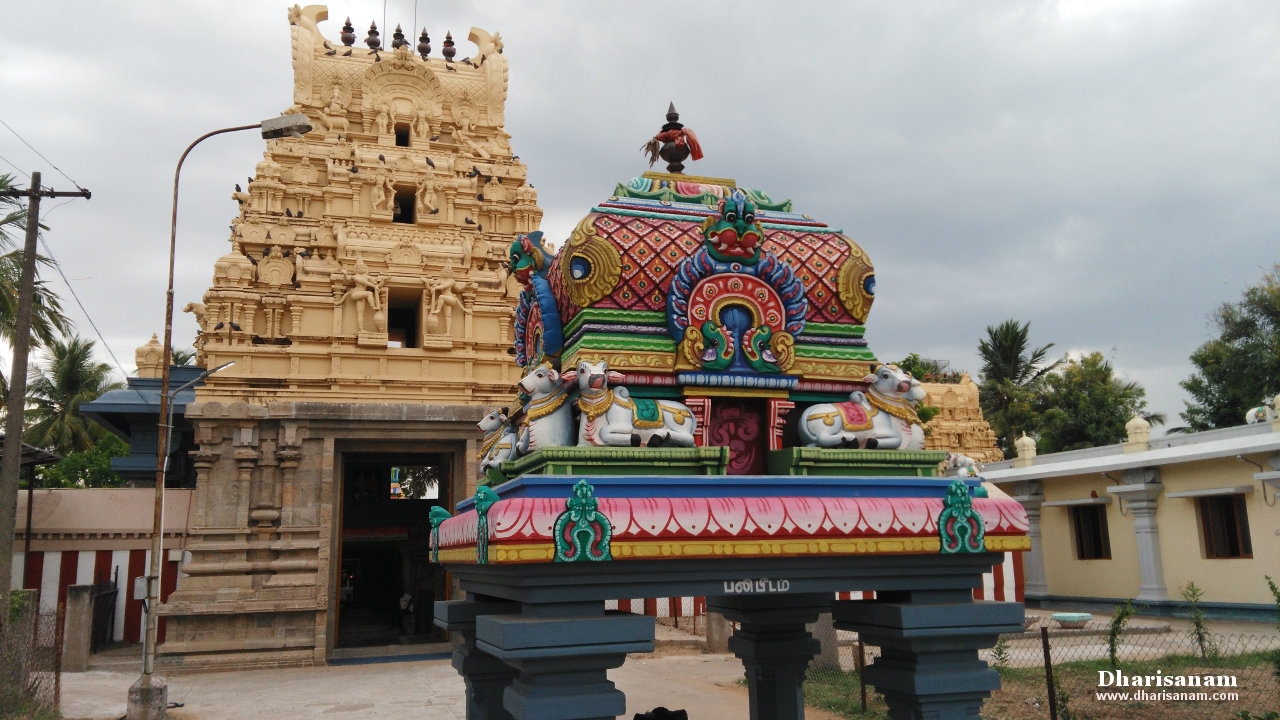
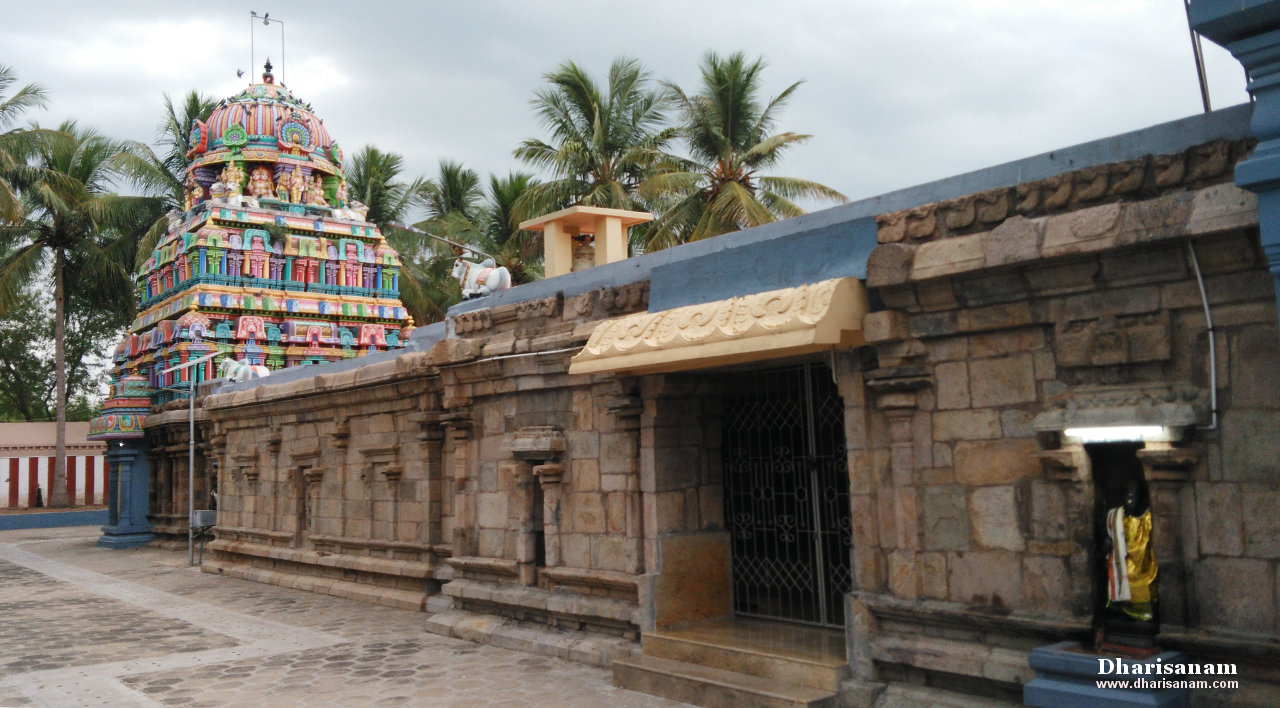
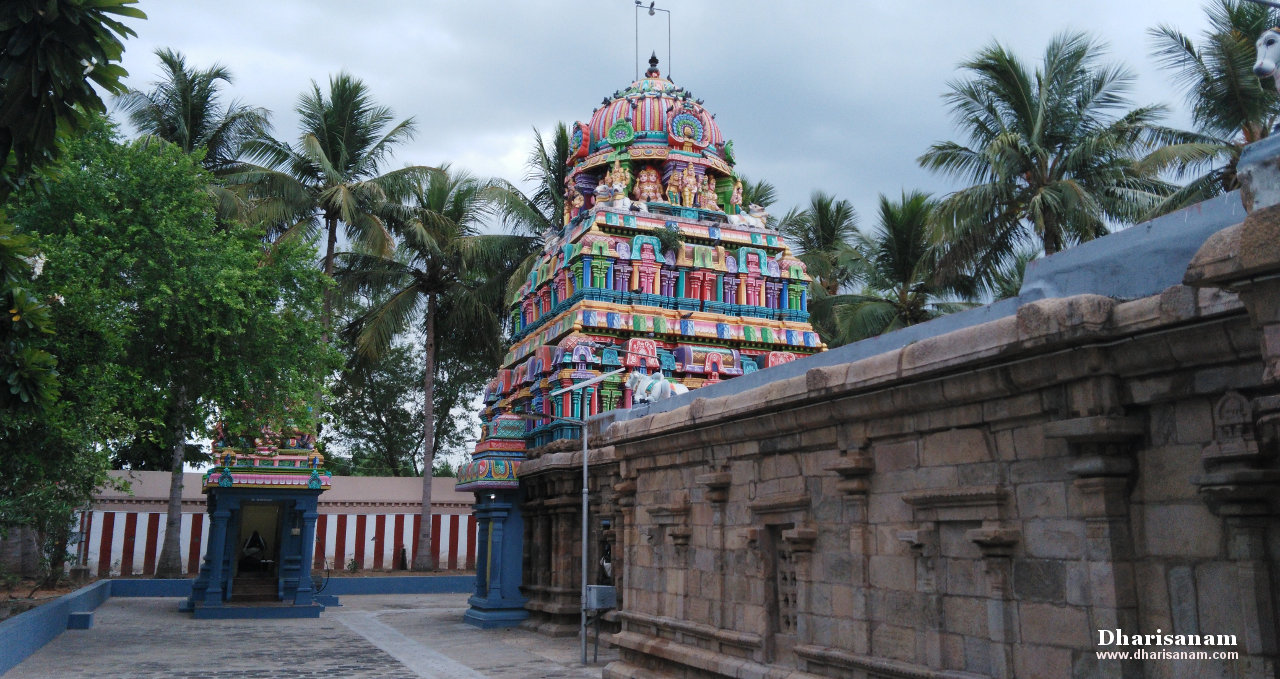
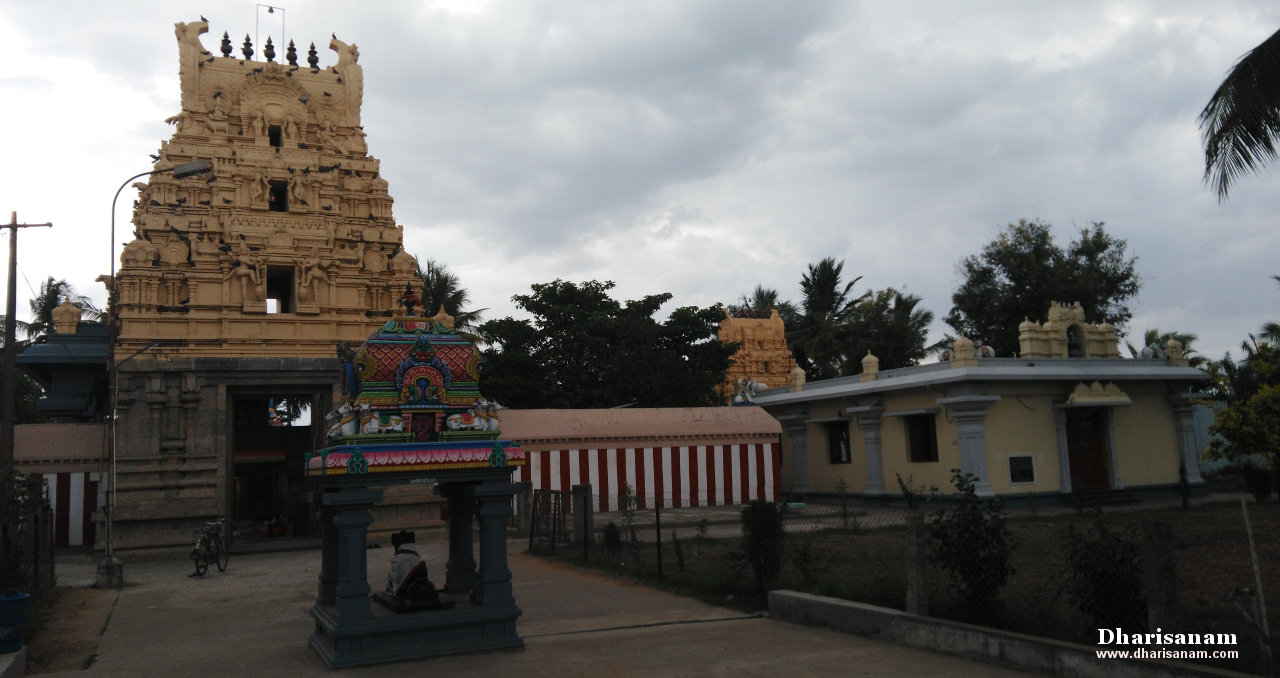

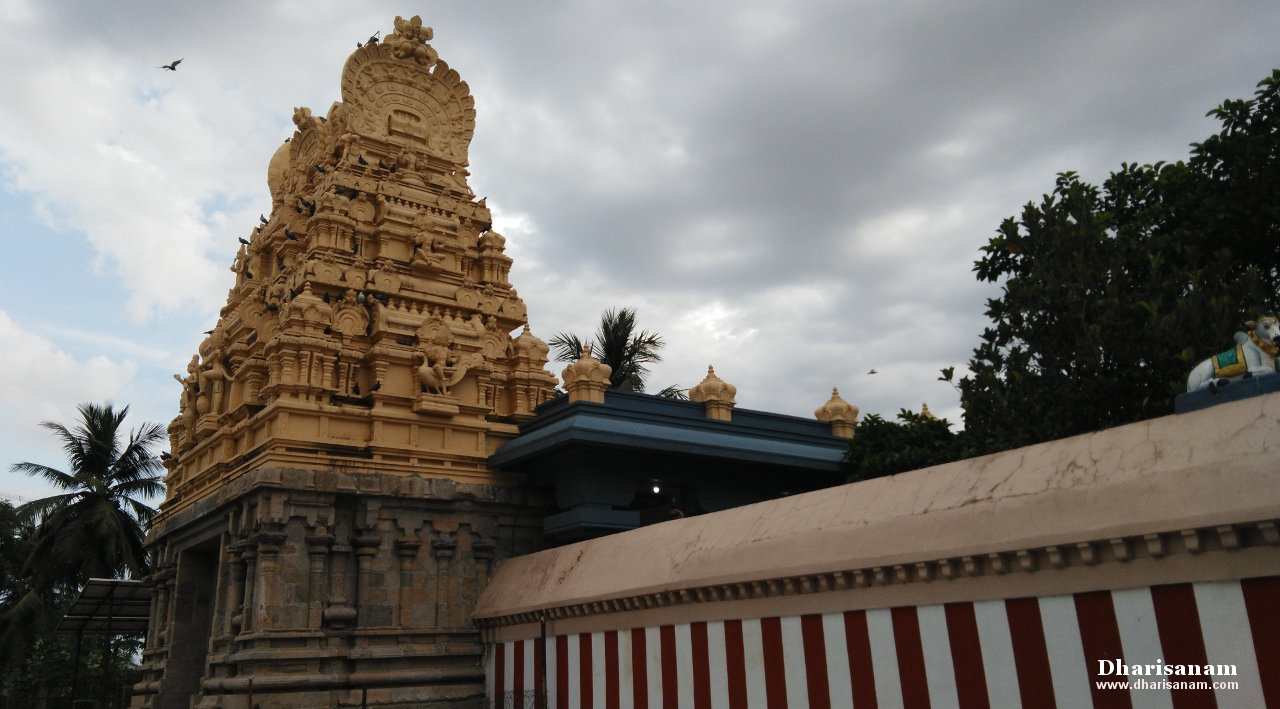
Pathigam (Hymn) with English transliteration and Tamil meaning.
Saint Thirunavukkarasar visited this temple and sang this Pathigam.
Devotees visiting this temple should make it a practice to recite this Pathigam.
Pathigam No.5.069.
மட்டிட் டகுழ லார்சுழ லில்வலைப்
பட்டிட் டுமயங் கிப்பரி யாதுநீர்
கட்டிட் டவினை போகக் கருவிலிக்
கொட்டிட் டையுறை வான்கழல் கூடுமே.
“Maṭṭiṭ ṭakuzha lārchuzha lilvalaip
paṭṭiṭ ṭumayaṅ kippari yāthunīr
kaṭṭiṭ ṭaviṉai pōkak karuvilik
koṭṭiṭ ṭaiyuṟai vāṉkazhal kūṭumē”.
தேனையுடைய மலர்களைவைத்துச் சூடிய கூந்தலை உடைய பெண்களாகிய சுழலின் வலைப்பட்டு மனம் மயங்கிப் பின் இரங்காமல், நீர் உம்மைக் கட்டிய வினைகள் போக. கருவிலிக்கொட்டிட்டை உறையும் பெருமான் திருவடிகளைக் கூடுவீராக.
ஞால(ம்)மல்கு மனிதர்காள் நாடொறும்
ஏல மாமல ரோடிலை கொண்டுநீர்
கால னார்வரு தன்முன் கருவிலிக்
கோல வார்பொழிற் கொட்டிட்டை சேர்மினே.
“Gnāla(m)malku maṉitharkāḷ nāṭoṟum
ēla māmala rōṭilai koṇṭunīr
kāla ṉārvaru thaṉmuṉ karuvilik
kōla vārpozhiṟ koṭṭiṭṭai sērmiṉē”.
உலகில் நிறைந்த மனிதர்களே! நாள்தோறும் சிறந்த மலர்களோடு பச்சிலைகளையும் பொருந்துமாறு கொண்டு, நீர்உமக்குக் கூற்றுவன் வருவதன் முன்பே அழகு மிக்க நெடிய பொழில்கள் சூழ்ந்த கருவிலிக்கொட்டிட்டையைச் சேர்வீராக.
பங்க மாயின பேசப் பறைந்துநீர்
மங்கு மாநினை யாதே மலர்கொடு
கங்கை சேர்சடை யான்றன் கருவிலிக்
கொங்கு வார்பொழிற் கொட்டிட்டை சேர்மினே.
“Paṅka māyiṉa pēsap paṟainthunīr
maṅku māniṉai yāthē malarkoṭu
gaṅgai sērsaṭai yāṉtṟaṉ karuvilik
koṅku vārpozhiṟ koṭṭiṭṭai sērmiṉē”.
குற்றமுடையவற்றைப் பேசுதலால், நீர் மங்குமாற்றை நினையாமல் மலர்களைக்கொண்டு, கங்கை சேர்ந்த சடையானுக்குரிய மணம் மிக்க நெடிய பொழில்களை உடைய கருவிலிக்கொட்டிட்டையைச் சேர்வீராக.
வாடி நீர்வருந் தாதே மனிதர்காள்
வேட னாய்விச யற்கருள் செய்தவெண்
காட னாருறை கின்ற கருவிலிக்
கோடு நீள்பொழிற் கொட்டிட்டை சேர்மினே.
“Vāṭi nīrvarun thāthē maṉitharkāḷ
vēṭa ṉāyvisa yaṟkaruḷ seythaveṇ
kāṭa ṉāruṟai kiṉtṟa karuvilik
kōṭu nīḷpozhiṟ koṭṭiṭṭai sērmiṉē”.
மனிதர்களே! நீர் துன்பங்களால் வாடிவருந்தாமல் அருச்சுனனுக்கு வேடனாய்வந்து அருள்செய்த திருவெண்காடனார் உறைகின்ற கிளைகள் நீண்ட பொழிலை உடைய கருவிலிக்கொட்டிட்டையைச் சேர்வீராக.
உய்யு மாறிது கேண்மின் உலகத்தீர்
பைகொள் பாம்பரை யான்படை யார்மழுக்
கையி னானுறை கின்ற கருவிலிக்
கொய்கொள் பூம்பொழிற் கொட்டிட்டை சேர்மினே.
“Uyyu māṟithu kēṇmiṉ ulakaththīr
paikoḷ pāmparai yāṉpaṭai yārmazhuk
kaiyi ṉāṉuṟai kiṉtṟa karuvilik
koykoḷ pūmpozhiṟ koṭṭiṭṭai sērmiṉē”.
உலகத்தில் உள்ளவர்களே! இதுவே உய்யும்வழி; கேட்பீராக; படம்கொண்ட பாம்பை அரையின்கண் அணிந்தவனும்,மழுப்படை பொருந்திய கையை உடையவனும் ஆகிய பெருமான் உறைகின்ற, கொய்து கொள்ளத்தக்க பூக்களை உடைய பொழில் சூழ்ந்த கருவிலிக்கொட்டிட்டையைச் சேர்வீராக.
ஆற்ற வும்மவ லத்தழுந் தாதுநீர்
தோற்றுந் தீயொடு நீர்நிலந் தூவெளி
காற்று மாகிநின் றான்றன் கருவிலிக்
கூற்றங் காய்ந்தவன் கொட்டிட்டை சேர்மினே.
“Ātṟa vum'mava laththazhun thāthunīr
thōtṟun thīyoṭu nīrnilan thūveḷi
kātṟu mākiniṉ tṟāṉtṟaṉ karuvilik
kūtṟaṅ kāynthavaṉ koṭṭiṭṭai sērmiṉē”.
நீர், மிகவும் துன்பத்தில் அழுந்தாமல், தோற்றுகின்ற தீ, நீர், நிலம், விசும்பு, காற்று ஆகி நின்றவனும், கூற்றுவனைக் காய்ந்தவனும் ஆகிய பெருமானுக்குரிய கருவிலிக் கொட்டிட்டையைச் சேர்வீராக.
நில்லா வாழ்வு நிலைபெறு மென்றெண்ணிப்
பொல்லா வாறு செயப்புரி யாதுநீர்
கல்லா ரும்மதில் சூழ்தண் கருவிலிக்
கொல்லே றூர்பவன் கொட்டிட்டை சேர்மினே.
“Nillā vāzhvu nilaipeṟu meṉtṟeṇṇip
pollā vāṟu seyappuri yāthunīr
kallā rum'mathil chūzhthaṇ karuvilik
kollē ṟūrpavaṉ koṭṭiṭṭai sērmiṉē”.
நில்லாத வாழ்வு நிலைபெறும் என்று எண்ணிப் பொல்லா நெறியின்கண் வினைகளைச் செய விரும்பாது, நீர், கல்லால் நிறைந்த மதில் சூழ்ந்து தண்ணியதும் கொல்லேறாகிய இடபத்தினை ஊர்வானுக்குரியதும் ஆகிய கருவிலிக் கொட்டிட்டையைச் சேர்வீராக.
பிணித்த நோய்ப்பிற விப்பிறி வெய்துமா
றுணர்த்த லாமிது கேண்மின் உருத்திர
கணத்தி னார்தொழு தேத்துங் கருவிலிக்
குணத்தி னானுறை கொட்டிட்டை சேர்மினே.
“Piṇiththa nōyppiṟa vippiṟi veythumā
ṟuṇarththa lāmithu kēṇmiṉ uruththira
kaṇaththi ṉārthozhu thēththuṅ karuvilik
kuṇaththi ṉāṉuṟai koṭṭiṭṭai sērmiṉē”.
உம்மைப் பிணித்துள்ள துன்பம் நிறைந்த பிறவிப் பிரிவெய்தும் நெறியை உணர்த்தலாகின்ற இதனைக் கேட்பீராக! உருத்திரகணத்தினார் தொழுதேத்துவதும், எண்குணத்தினான் உறைவதும் ஆகிய கருவிலிக்கொட்டிட்டையைச் சேர்வீராக.
நம்பு வீரிது கேண்மின்கள் நாடொறும்
எம்பி ரானென் றிமையவ ரேத்துமே
கம்ப னாருறை கின்ற கருவிலிக்
கொம்ப னார்பயில் கொட்டிட்டை சேர்மினே
“Nampu vīrithu kēṇmiṉkaḷ nāṭoṟum
empi rāṉeṉ tṟimaiyava rēththumē
kampa ṉāruṟai kiṉtṟa karuvilik
kompa ṉārpayil koṭṭiṭṭai sērmiṉē”.
மனிதர்களே! நான் சொல்லும் இதனை நம்பிக் கேட்பீராக; நாள்தோறும் தேவர்கள் 'எம்பெருமான்!' என்று ஏத்தும் ஏகம்பத்து இறைவனார் உறைகின்றதும், பூங்கொம்பு போன்ற பெண்கள் பயில்வதும் ஆகிய கருவிலிக்கொட்டிட்டையைச் சேர்வீராக.
பாரு ளீரிது கேண்மின் பருவரை
பேரு மாறெடுத் தானை யடர்த்தவன்
கார்கொள் நீர்வயல் சூழ்தண் கருவிலிக்
கூர்கொள் வேலினன் கொட்டிட்டை சேர்மினே.
“pāru ḷīrithu kēṇmiṉ paruvarai
pēru māṟeṭuth thāṉai yaṭarththavaṉ
kārkoḷ nīrvayal chūzhthaṇ karuvilik
kūrkoḷ vēliṉaṉ koṭṭiṭṭai sērmiṉē”.
உலகிலுள்ளவர்களே! இது கேட்பீராக! பெரிய திருக்கயிலாய மலையைப் பேருமாறு எடுக்கலுற்ற இராவணனை அடர்த்தவனும் கூர்மைகொண்ட வேலை உடையவனும் ஆகிய பெருமான் உறைகின்ற கருமையைக் கொண்ட நீர் நிறைந்த வயல் சூழ்ந்த குளிர்ந்த கருவிலிக்கொட்டிட்டையைச் சேர்வீராக.







